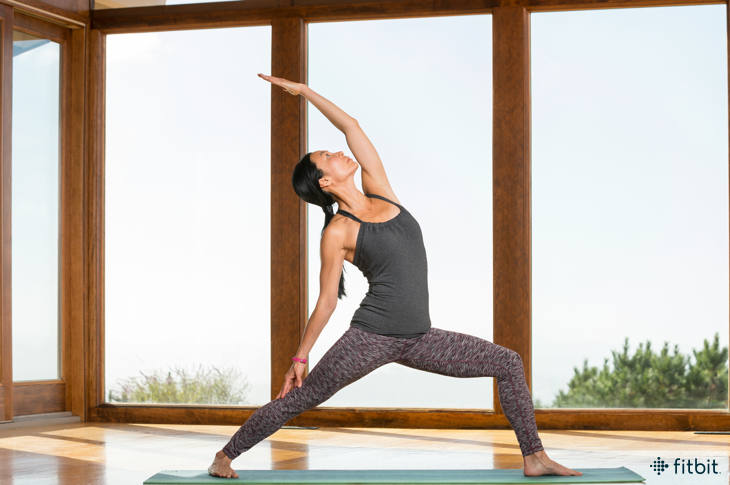
You probably already have a handle on how yoga can make you feel good: It improves your flexibility while also building strength. A recent study published in the European Journal of Preventative Cardiology links yoga to cardiovascular benefits similar to aerobic exercise, too, like lower blood pressure, lower levels of LDL (bad cholesterol), and lower resting heart rate. Like any workout, of course, your effort dictates your results. Here, Udaya Yoga founder Rudy Mettia, a Los-Angeles-based yoga instructor, strength coach—and former Marine—explains how you can ramp up your heart rate while you get down on the mat.
Choose Vinyasa, Power, or Flow
“These classes are all basically versions of Vinyasa, which is when you do one movement per breath,” Mettia says. “You’ll likely perform a combination of static (when you’re still) and dynamic poses throughout the class, but you’ll typically be moving most of the time—burning more calories at a faster pace.”
Hold Static Poses for 2 Minutes
“When you hold a pose you’re basically working to stay balanced, by contracting your muscles,” Mettia explains. “Anytime your muscles contract for a period of time, they’ll need more oxygen, so your heart rate elevates to get that oxygen where it needs to be. With a pose like Warrior 2, for example, you’re also working major muscle groups like your glutes, and legs—it’s hard work. I start to feel my heart rate go up within 30 seconds in Warrior 2, and at the two minute mark, I can feel my pulse in my neck. Static poses often require the same effort as dynamic movement.”
Find Your Goldilocks Spot
“It’s important to know your target heart-rate zone, and within it, when you’re working hard enough to stay there, but not too hard so that your form suffers, or you can’t complete a sequence,” Mettia says. “That’s your Goldilocks Spot—it’s not too hot, and not too cold. Tracking your heart rate so you can stay in that ‘spot’ helps keep you accountable. The body adapts to stress, so you also have to keep increasing intensity over time, to work hard enough. Of course, seeing your tracked progress is also motivating and fun—which is most important anyway.”
Practice for At Least 40 Minutes
The American Heart Association recommends 30 minutes of moderate exercise each day, and it’s been shown you can see similar cardiovascular benefits from three daily, 10-minute workouts. When it comes to yoga, though, you’re less likely to hit the mat three times in one day, so make sure your class is long enough to deliver a challenge. “A 20-minute yoga session is great if you need to find a moment of calm,” Mettia says. “But if you want more cardiovascular benefits, practice for 40 minutes to an hour to ensure you’re working hard enough to keep your heart rate in the target zone.”
This information is for educational purposes only and is not intended as a substitute for medical diagnosis or treatment. You should not use this information to diagnose or treat a health problem or condition. Always check with your doctor before changing your diet, altering your sleep habits, taking supplements, or starting a new fitness routine.

If you have questions about a Fitbit tracker, product availability, or the status of your order, contact our Support Team or search the Fitbit Community for answers.
Please note: Comments are moderated and may not appear immediately after submission.